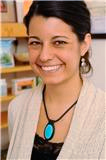At a recent gathering, a friend mentioned having knee pain. I quickly assessed it using neoclassical pulse diagnosis techniques and by palpating the location of the pain. Afterward, I found and applied four acupressure points with press-on seeds. As a result his knee felt much better throughout the party and the following days.
By using neoclassical pulse diagnosis in a clinical setting (meaning with further investigation and time), I am able to confidently provide my patients with efficient care for myriad health concerns, including pain, pyscho-social issues, insomnia, energy loss, hormonal imbalances, and digestive issues.
Having success in the clinic is a result of applying the techniques taught in Dr. William Morris’ neoclassical pulse series and training with him as an intern in his clinical rotations.
In Will Morris’ neoclassical pulse courses I learned how to assess a patient’s radial pulses as a diagnostic tool and immediate feedback loop. This feedback loop is invaluable in creating confidence in the practitioner, treating quickly and effectively while obtaining great clinical outcomes, and in maintaining my own health. Successfully using neoclassical-style pulse diagnostics created confidence in me as a practitioner.
During my treatments on patients I am able to monitor my patient’s pulse as it changes. As my patient’s pulse becomes more balanced and level, I know I have chosen a good course of treatment.
Neoclassical pulse diagnosis is also a great tool for assessing and treating on the go, because you can quickly evaluate the pulse, apply a few acupressure seeds, and still get great results. Learning to use the pulse as a feedback loop in clinical settings creates high-quality, efficient patient care.
Yet it isn’t just for patients. In fact, I find myself evaluating my pulse and applying indicated acupressure points. This daily self-care ritual takes seconds and is a great way to stay healthy, emotionally balanced, and pain free.
I am honored to have trained with Dr. Morris, and will continue to attend his classes and online teachings, as he provides invaluable insight into the world of patient-centered care. I highly recommend his neoclassical pulse series to all students interested in expanding their acupuncture and diagnostic repertoire.
 Anne Cusick LAc, MAcOM graduated from AOMA in 2008 and is in current practice with Dr. Clark-Brown at a family care integrated clinic, specializing in pain management. www.cusickacupuncture.com
Anne Cusick LAc, MAcOM graduated from AOMA in 2008 and is in current practice with Dr. Clark-Brown at a family care integrated clinic, specializing in pain management. www.cusickacupuncture.com



